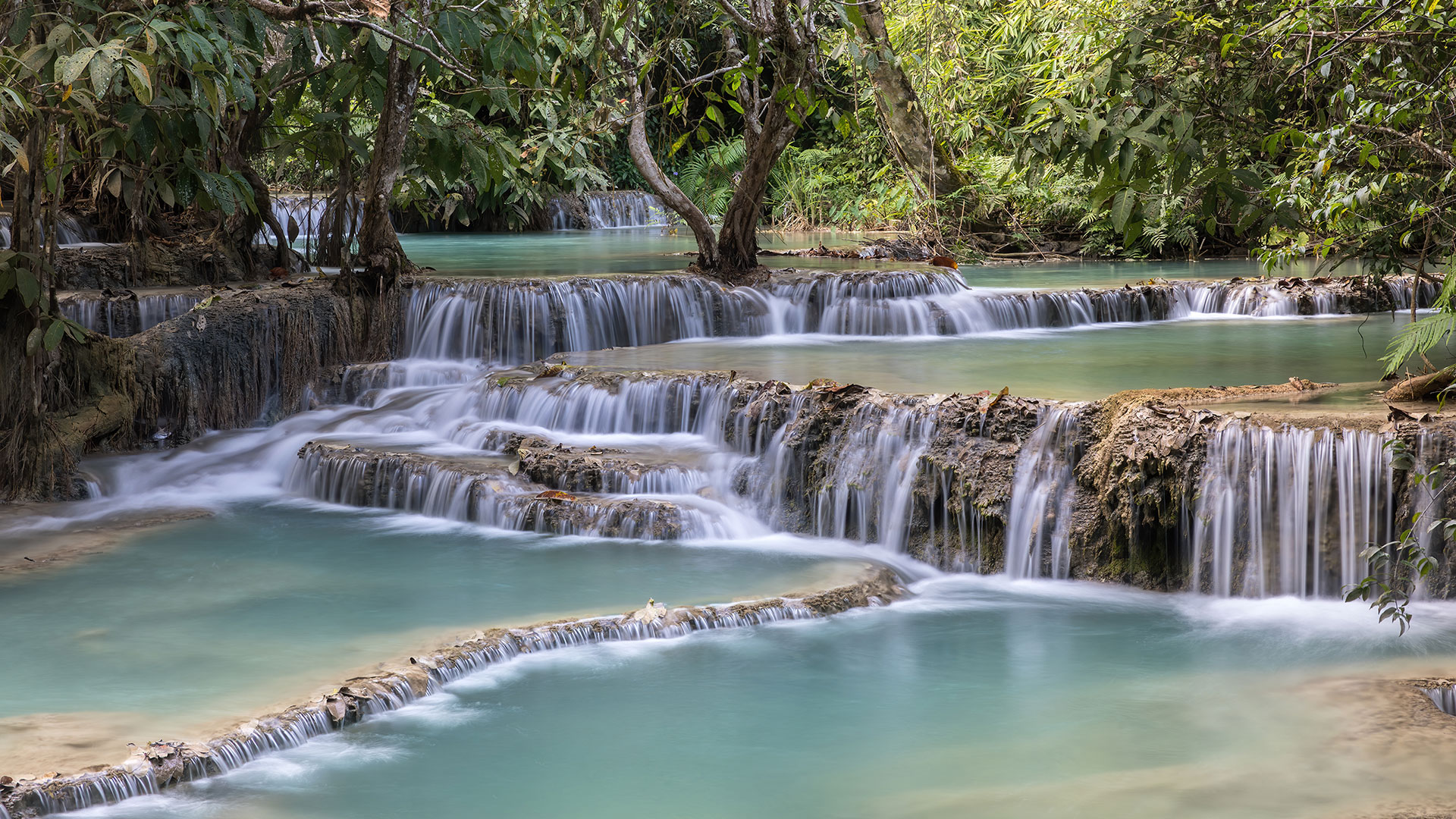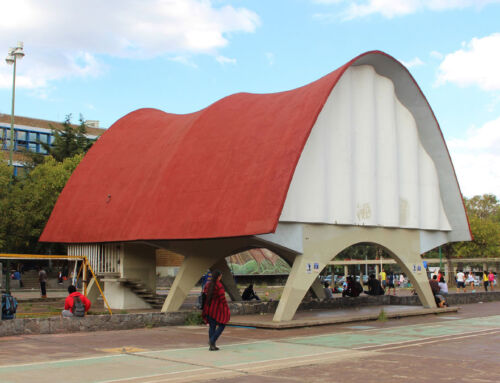This time we bring you a review of the world’s 10 most spectacular natural pools. These pools have been formed over centuries, thanks to the deposit of calcium carbonate produced by the cooling of the thermal waters with which they are associated. Most of these pools are located in natural parks, amidst forests and spectacular mountain scenery, and therefore usually enjoy some form of public protection. Some of them are open for bathing, while others are considered sacred sites.
Egerszalok Pools, Hungary

The water flowing into these pools has been used as a thermal spring since 1730. The present spa, however, became operational in 1961. The steaming water cascades down a series of pools formed from travertine. This shimmering mineral precipitates from the water as it interacts with air at atmospheric temperature. The travertine is locally called “salt”, and the cascading pools are known as “salt hills“.
Plitvice Lakes, Croatia (Plitvička jezera)

Plitvice Lakes National Park is located in the Karst mountain area of central Croatia, near the border with Bosnia and Herzegovina. It was inscribed on UNESCO’s list of World Heritage Sites in 1979. It is home to a picturesque series of caves and 16 limestone tufa lakes connected by waterfalls. The area protected as a National Park, covers 30,000 hectares and receives more than a million visitors each year.
Pamukkale, Turkey
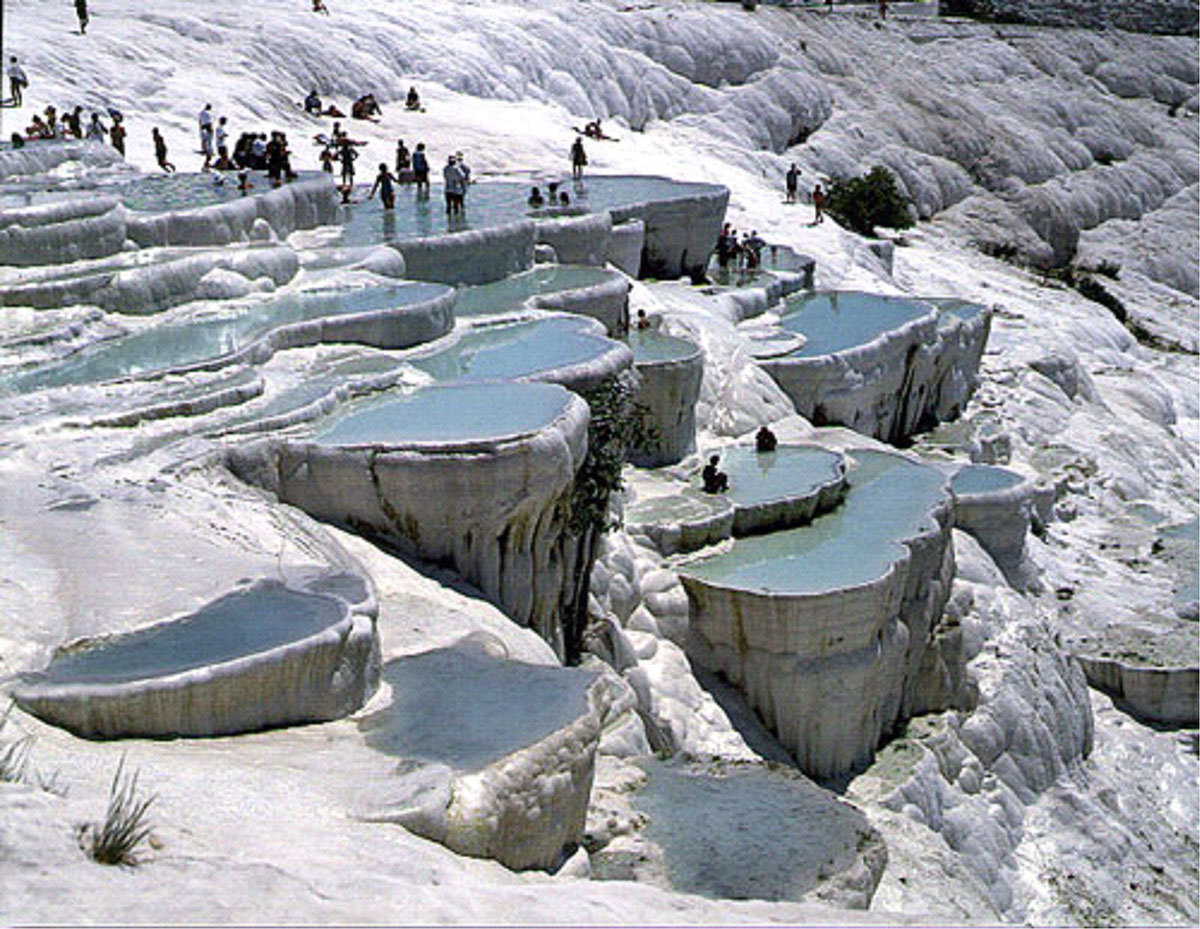
Pamukkale” means “cotton castle” in Turkish. It is a natural site in the southwest of the country, Denizli province, in the Menderes River valley of the Inner Aegean region, with a temperate climate for most of the year. The area is famous for the 2,700 m long, 600 m wide and 160 m high valley of carbonate mineral deposited by the thermal stream over the centuries, in which the terraced pools have formed. The ancient Greek city of Hierapolis is located at the top of the travertine formation. Eumenes II, King of Pergamon, founded the city around 180 BC. An earthquake destroyed it during the reign of Tiberius in 17 AD. It was rebuilt and underwent many transformations during the 2nd and 3rd centuries AD, until it became a typically Roman city. During this period it was a summer resort for the nobles of the Roman Empire, who were attracted by the thermal waters of Pamukkale. The whole complex has been a UNESCO World Heritage Site since 1988.
Badab Soort, Iran
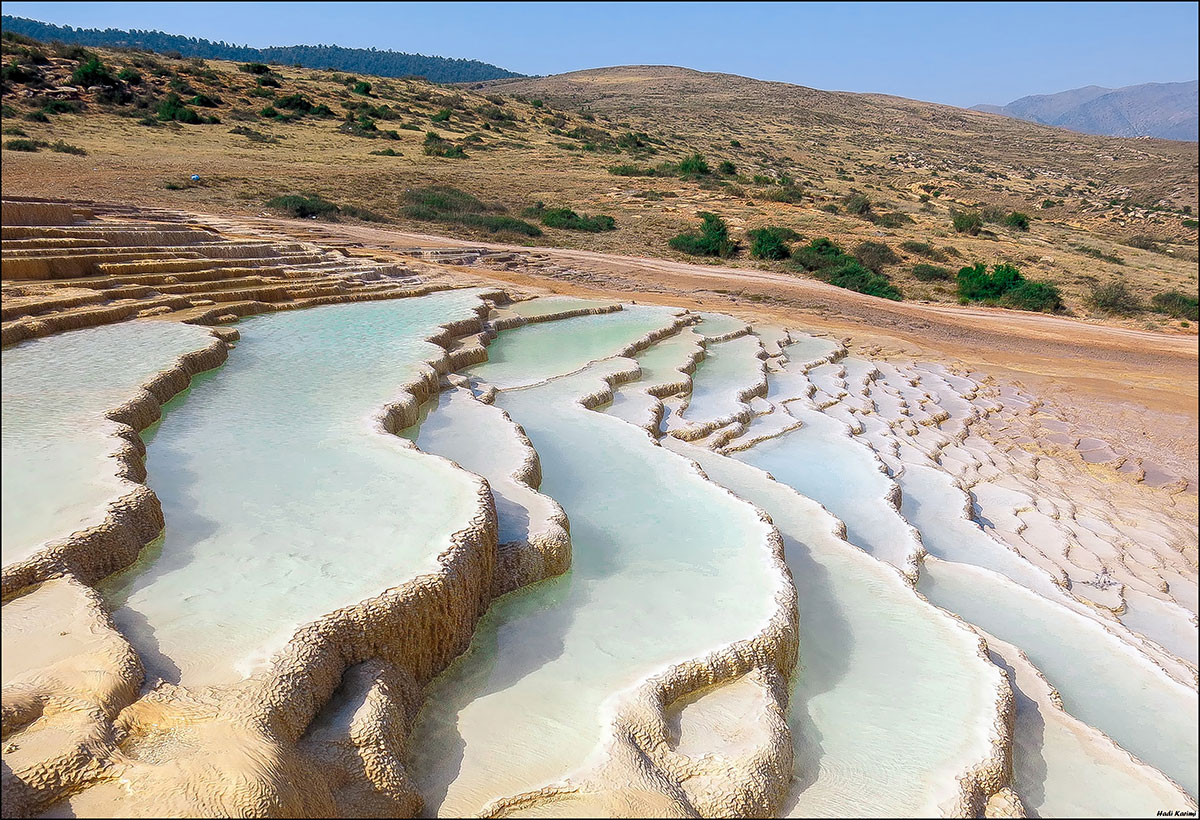
At an altitude of 1,840 m, Badab Soort is a natural site in northern Iran. It comprises a series of stepped travertine terraces, created over thousands of years with water flowing from two mineral hot springs. The first of these springs contains very salty water, to which medicinal properties are attributed for rheumatism and some skin diseases. The second spring is predominantly orange in colour, mainly due to the iron oxide sediments carried by its waters. The site is located in Mazandaran, 95 km south of Sari town and 7 km west of Orost village.
Baishuitai, Yunnan, China

At an altitude of 2,380m, the terraces of the Baishui (White River) are the centre of the Dongba culture of the Naxi people. It is said that the founder of this culture settled in the area after returning from his journey to Tibet to spread his beliefs. Since then, the people have regarded the terraces as a shrine. Every February 8th, according to the Chinese lunar calendar, which marks the beginning of Dongba culture, the locals gather around the terraces to celebrate the Er Yue Ba (literally, ‘February 8’) festival. On this day, the Naxi people sing, dance and sacrifice chickens as an offering to the Mountain God. The festival ends with the ceremony of impregnating the branches of the trees surrounding the terraces, with the blood of the sacrificed animals.
Huanglong, Sichuan, China
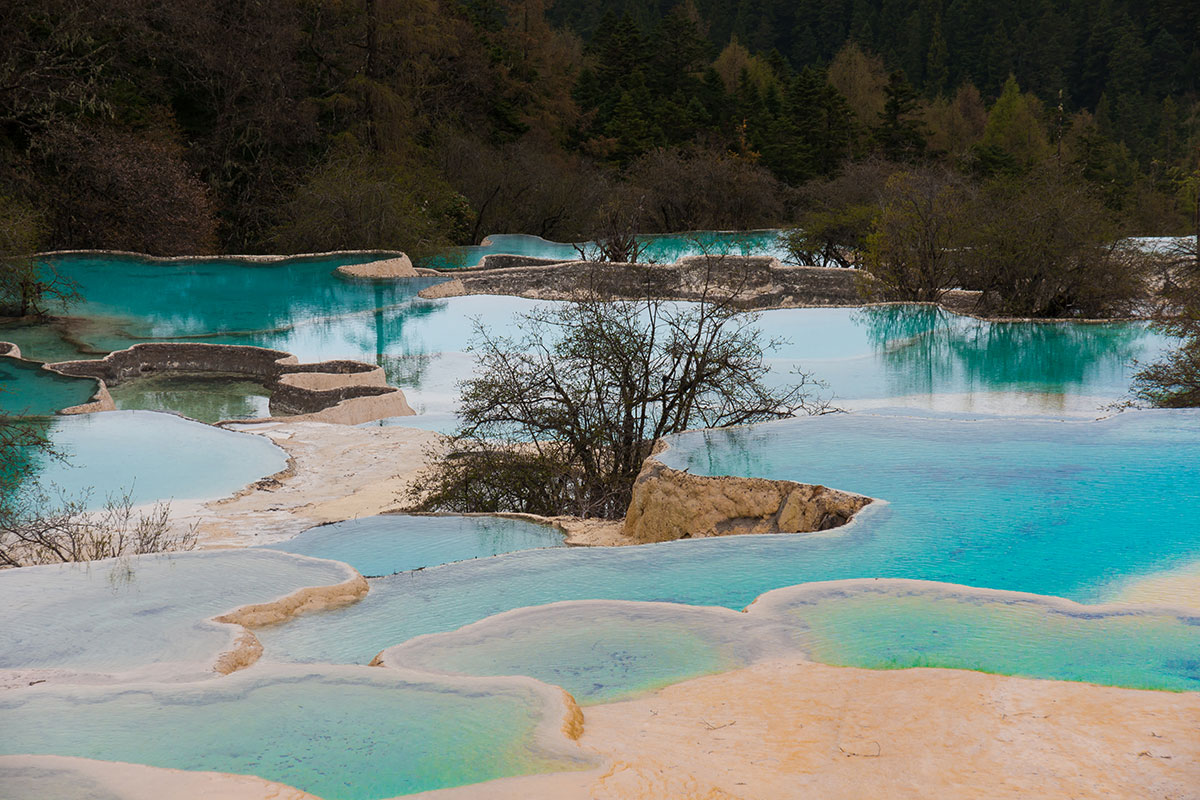
This 3.6 km long area, which is said to resemble a huge golden dragon rolling down the valley’s mountains, is known for colourful travertine pools formed by calcite deposits. The landscape is made up of diverse forest ecosystems, snow-capped peaks, waterfalls and hot springs. Huanglong is also home to several endangered species, such as the giant panda and the Sichuan golden snub-nosed monkey. In addition, a large population of the endemic orchid species Cypripedium plectrochilum was discovered here. Huanglong was declared a UNESCO World Heritage Site in 1992 and a biosphere reserve in 2000.
Kuang Si, Luang Prabang, Laos
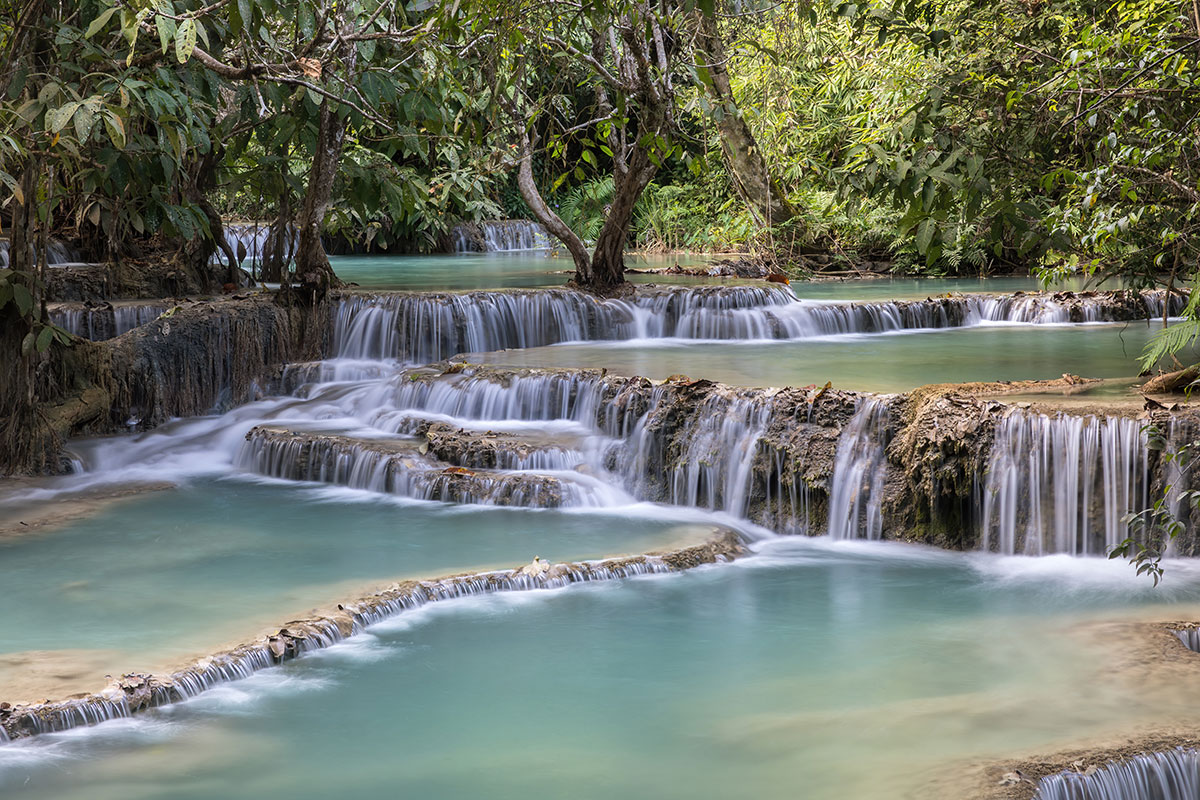
Kuang Si Falls is a three-tiered waterfall located about 29 km south of the town of Luang Prabang in Laos. Small pools at the top of a hill lead steeply down to the main waterfall, with a drop of about 60m. The water flows into a turquoise-blue pool before continuing on. Except for one of the pools, which is considered sacred, bathing is allowed in most of the others.
Mammoth Hot Springs, Yellowstone National Park, South Dakota, USA
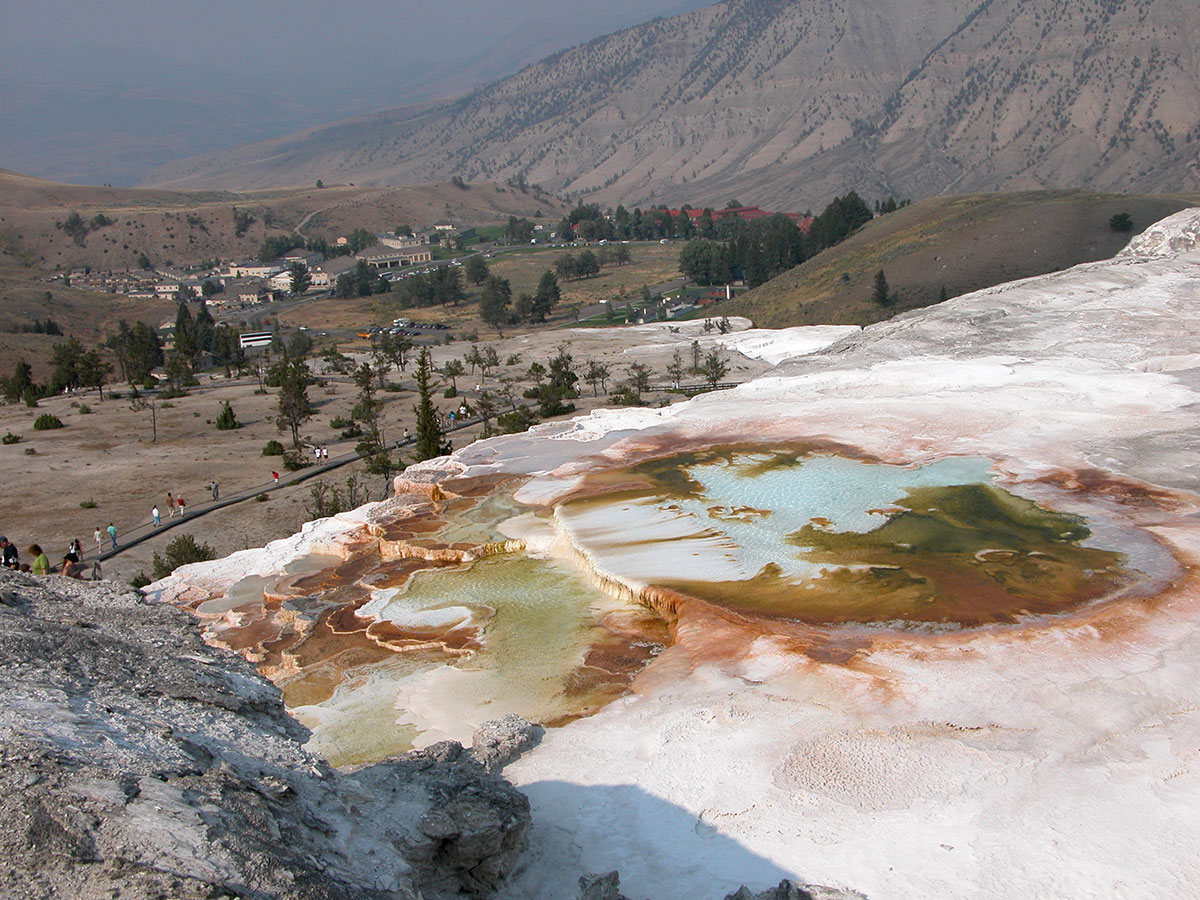
Hot Springs is a vast complex on a travertine hill in Yellowstone National Park. Thermal activity here is extensive in both time and space. Thermal flows have great variability with changes over days or decades. Mammoth Hot Springs Terrace Mountain is the largest carbonate depositional stream in the world. The main attraction is the Minerva Terrace. Due to recent minor seismic activity, the outlet of the stream has shifted, leaving the terraces dry.
Havasu Falls Canyon, Arizona

These terraced pools occur near the mouth of the Havasu tributary of the Colorado River. They are located 2.4 km from the town of Supai, within the territory of the Havasupai tribe. The falls consist of a main watercourse that drops into a large pool down a 37 m vertical cliff. Due to the high mineral content of the water, particularly calcium carbonate, which is responsible for the formation of travertine, the falls are ever-changing. Sometimes they even break into two separate chutes of water. Another consequence of the high mineralisation of the water is its intense blue colour.
Semuc Champey, Guatemala

In the town of Alta Verapaz, Guatemala, lies the natural enclave of Semuc Champey, or “where the river hides under the mountain” in Q’eqchi’, the most spoken and most widespread of the Mayan languages, and the second most spoken in the country. In the middle of a thick tropical forest, Semuc Champey consists of a natural limestone bridge about 350 metres long, under which part of the Cahabón River disappears. The rest of the water forms a large number of travertine pools between 1 and 3 m deep. The turquoise or jade green colour changes throughout the year with the weather, the sun and other natural factors.
By Miquel Solís, Senior Architect in the Architecture Department of Amusement Logic


